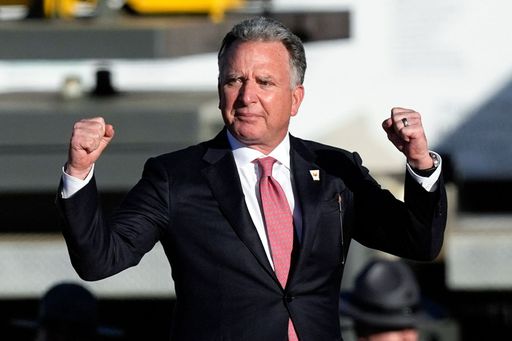A renewed diplomatic push to end the war in Gaza has gained momentum over the past 48 hours, buoyed by a new US-backed ceasefire proposal. While both Israel and Hamas appear engaged, the path to peace remains strewn with political distrust, humanitarian catastrophe, and unaddressed core demands.
The White House said on Thursday that Israel had approved a ceasefire proposal put forward by US envoy Steve Witkoff and was now awaiting a formal response from Hamas.
The proposal envisions a 60-day ceasefire, with 28 Israeli hostages—alive and dead—released in the first week, in exchange for 1,236 Palestinian prisoners and the remains of 180 Palestinians.
Release would occur in two waves – day one and day seven– with no public ceremonies. The plan also mentions the immediate delivery of humanitarian aid to Gaza, coordinated by the United Nations and the Red Crescent.
A previous two-month truce collapsed in mid-March after Israel launched air strikes on Gaza.

Who is saying what?
On Thursday, White House Press Secretary Karoline Leavitt confirmed that Israel had “signed off” on the proposal, which was subsequently submitted to Hamas by the Trump administration’s Middle East envoy, Steve Witkoff. The plan has been mediated by Qatar and Egypt.
A senior Hamas official said the proposal failed to meet the group’s core demands and that a formal reply would be issued in due course.
The Israeli government has yet to issue an official statement. According to BBC, Israel’s Channel 12 TV reported that Netanyahu informed the families of hostages in Gaza that Israel had accepted the ceasefire proposal.
Netanyahu’s office later accused a reporter of attempting to “smuggle” a recording device into the meeting. However, the statement did not deny that he had accepted the US proposal, the BBC report stated.
Netanyahu has previously stated that the war will only end once all hostages are freed, Hamas is either dismantled or disarmed, and its leadership is exiled.
Hamas has expressed “serious reservations,” arguing that the deal falls short of their core demands: a permanent ceasefire, complete Israeli withdrawal from Gaza, and unhindered humanitarian access.
Hamas told Reuters it is currently reviewing the plan and is expected to issue a formal response by Friday or Saturday. Hamas’s political bureau member Bassem Naim described the current proposal as a continuation of “killing and famine,” saying it failed to address any of the Palestinian people’s core demands.
Another source close to the group said the latest version “is considered a retreat” from the previous one, which “included an American commitment regarding permanent ceasefire negotiations,” AFP reported.
What’s happening on the ground?
Even as negotiations flicker with tentative hope, Gaza’s humanitarian situation continues to deteriorate.
Although aid is beginning to trickle in after more than two months of Israeli blockade, food insecurity is now critical. As famine looms, nearly all of Gaza’s 2.3 million residents are acutely malnourished, one in five Palestinians in Gaza faces starvation, according to the UN.
The Gaza Humanitarian Foundation (GHF), backed by Israel and the US, has faced criticism for its centralised, militarised approach. Over the past two days, Israeli forces opened fire near GHF distribution points in Rafah and Deir al Balah, injuring over 50 Palestinians and killing at least three. The United Nations and other aid agencies have accused the GHF of fostering “engineered scarcity” and undermining humanitarian norms.
Despite Israel's recent easing of its 11-week blockade, allowing limited aid via the UN and GHF, only about 200 of the approved 800 truckloads have reached Palestinians due to insecurity and logistical constraints have hampered aid flows.
Over the past 48 hours, Israeli military offensives have intensified, and Gaza’s health infrastructure has all but collapsed.
In the Nuseirat refugee camp, a strike on an abandoned fuel station sheltering displaced families killed at least 15 people, according to the BBC. Another attack in Deir al Balah killed 13 members of the Abu Samra family, including women and children.
On Thursday, Israeli forces ordered the evacuation of Al-Awda Hospital in Tel al-Zaatar, northern Gaza—the last functional medical facility in the area.
According to hospital officials, 97 people were inside at the time, including 13 patients and 84 medical staff, The Guardian reported. The hospital, overwhelmed by casualties and depleted of supplies, has now ceased operations.
The Gaza Health Ministry reports more than 54,000 deaths since the start of the conflict, the majority of them women and children.
The World Health Organization warns that Gaza’s healthcare system is “stretched beyond breaking point,” with 94 percent of hospitals damaged or destroyed. Medical staff are performing surgeries without anaesthesia, and essential supplies remain scarce.
For now, the ceasefire proposal now hangs in the balance. With more than 54,000 Palestinians killed and much of Gaza reduced to rubble, pressure is mounting for a breakthrough. But unless both sides can find a middle ground, the suffering of Gaza’s civilians — and the geopolitical stalemate — looks set to continue.















